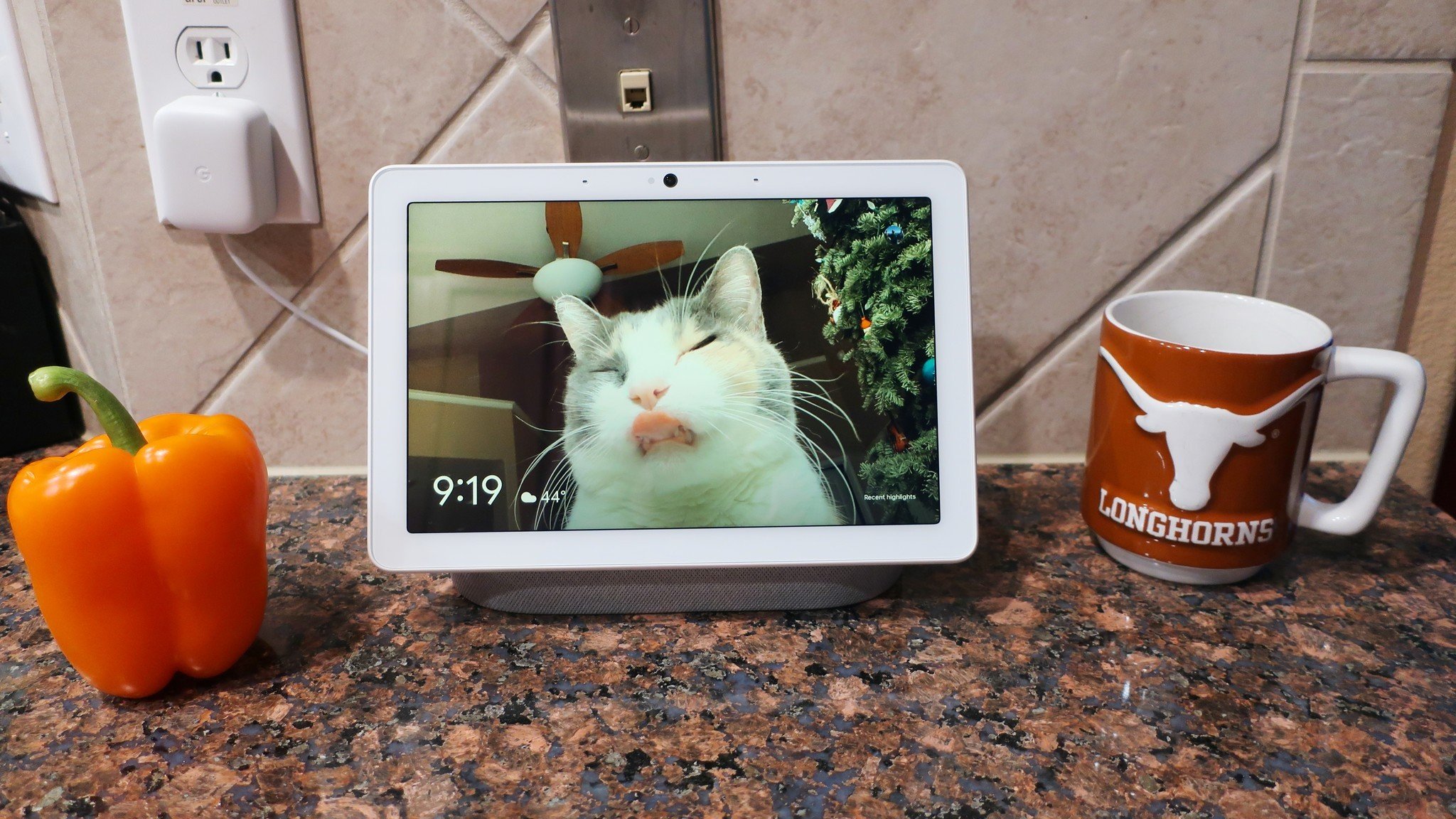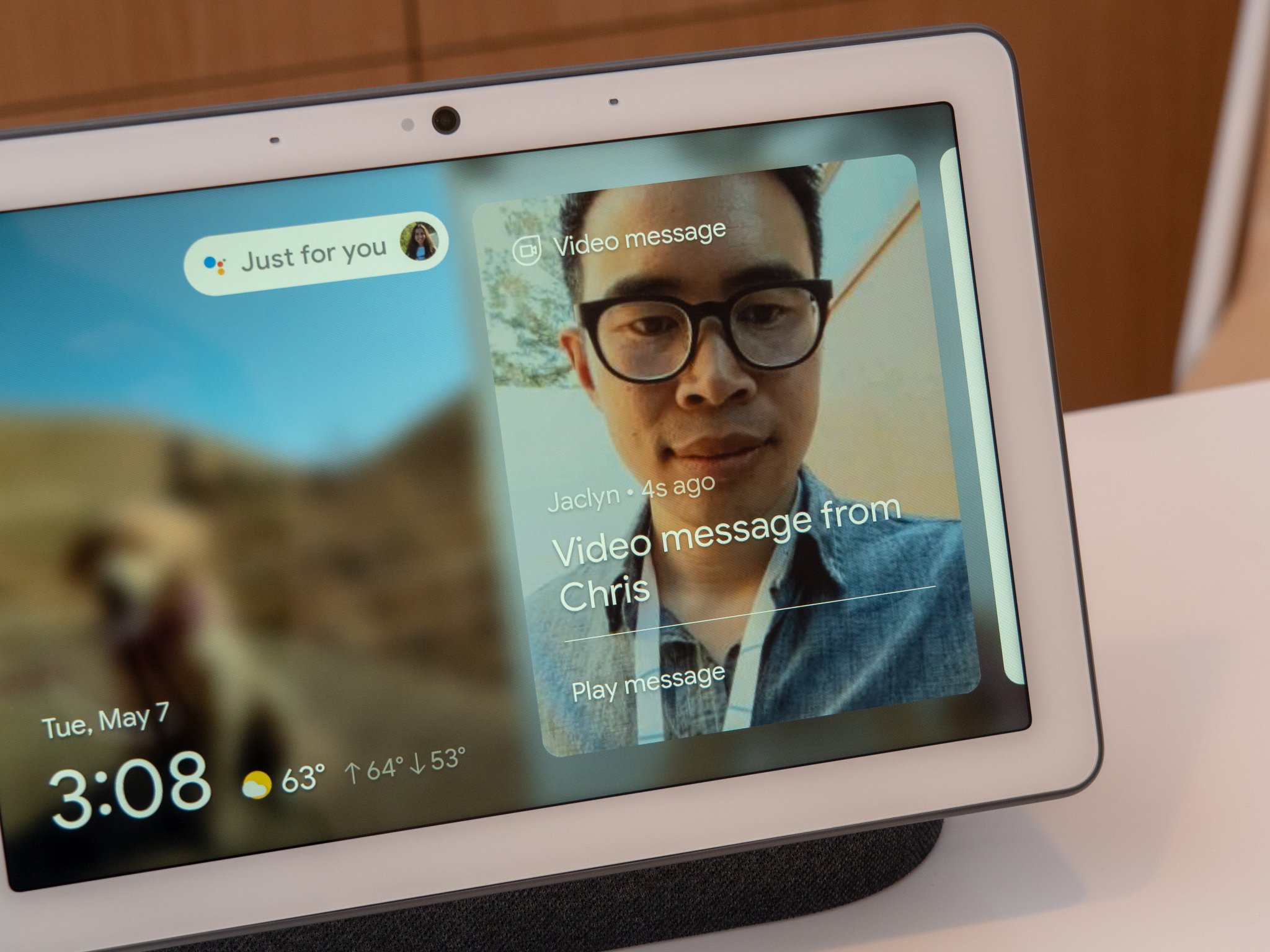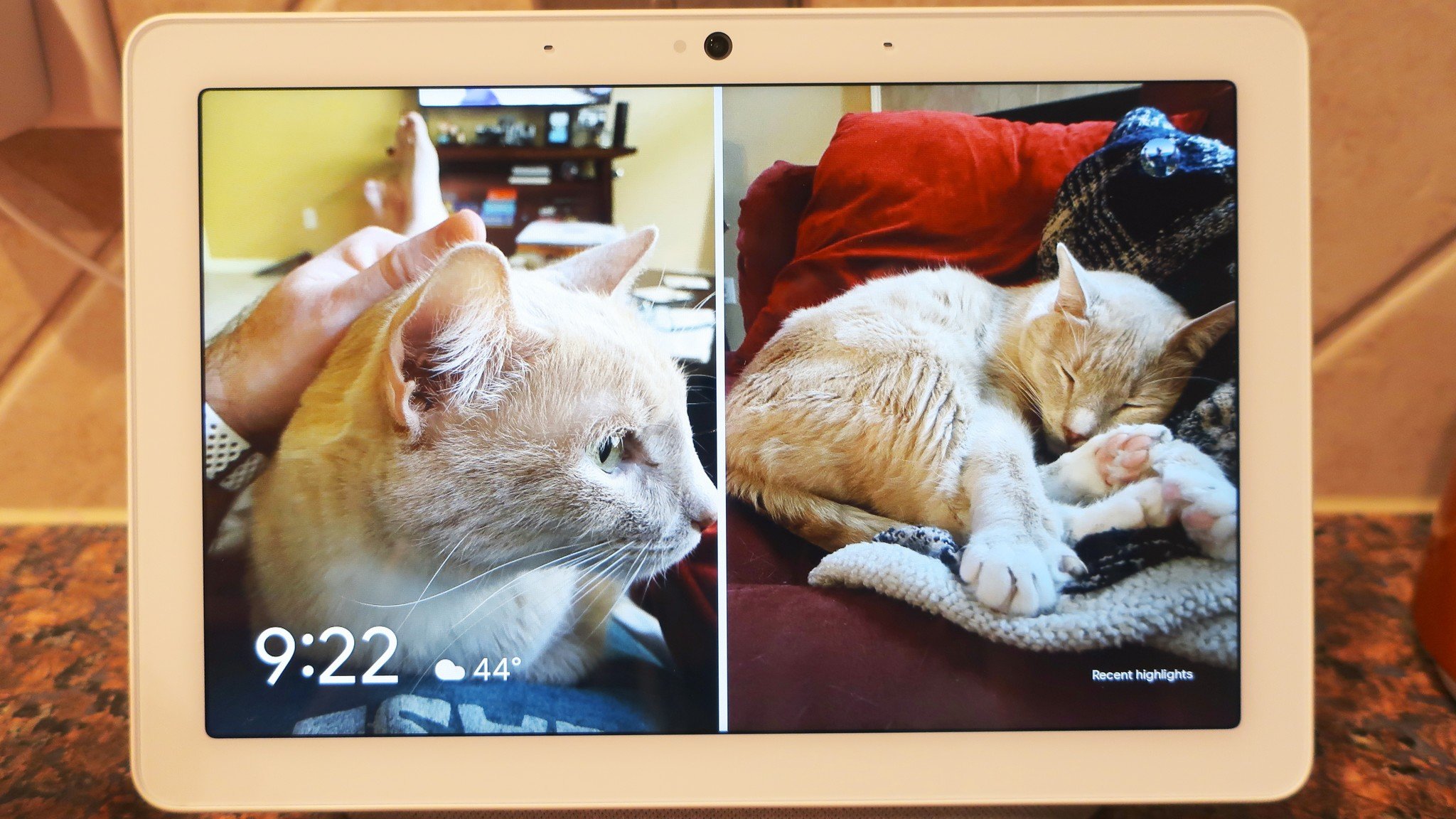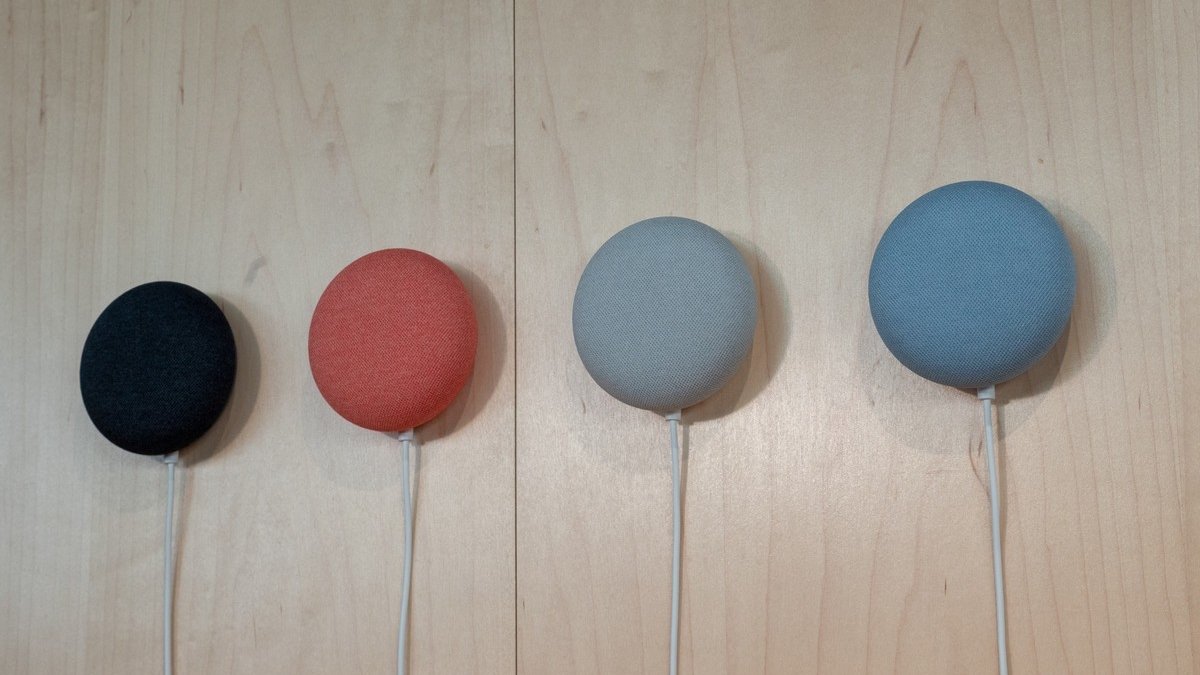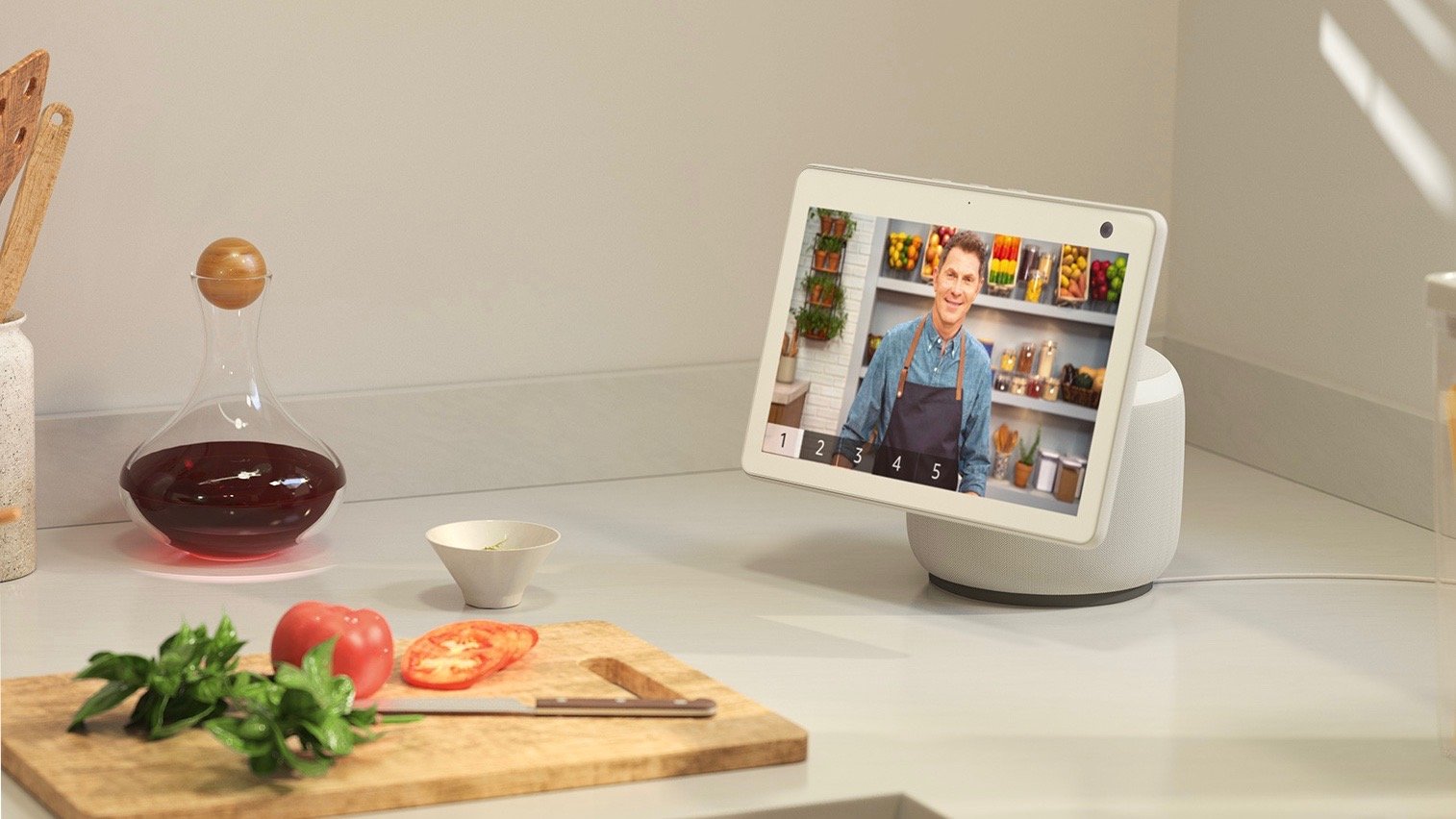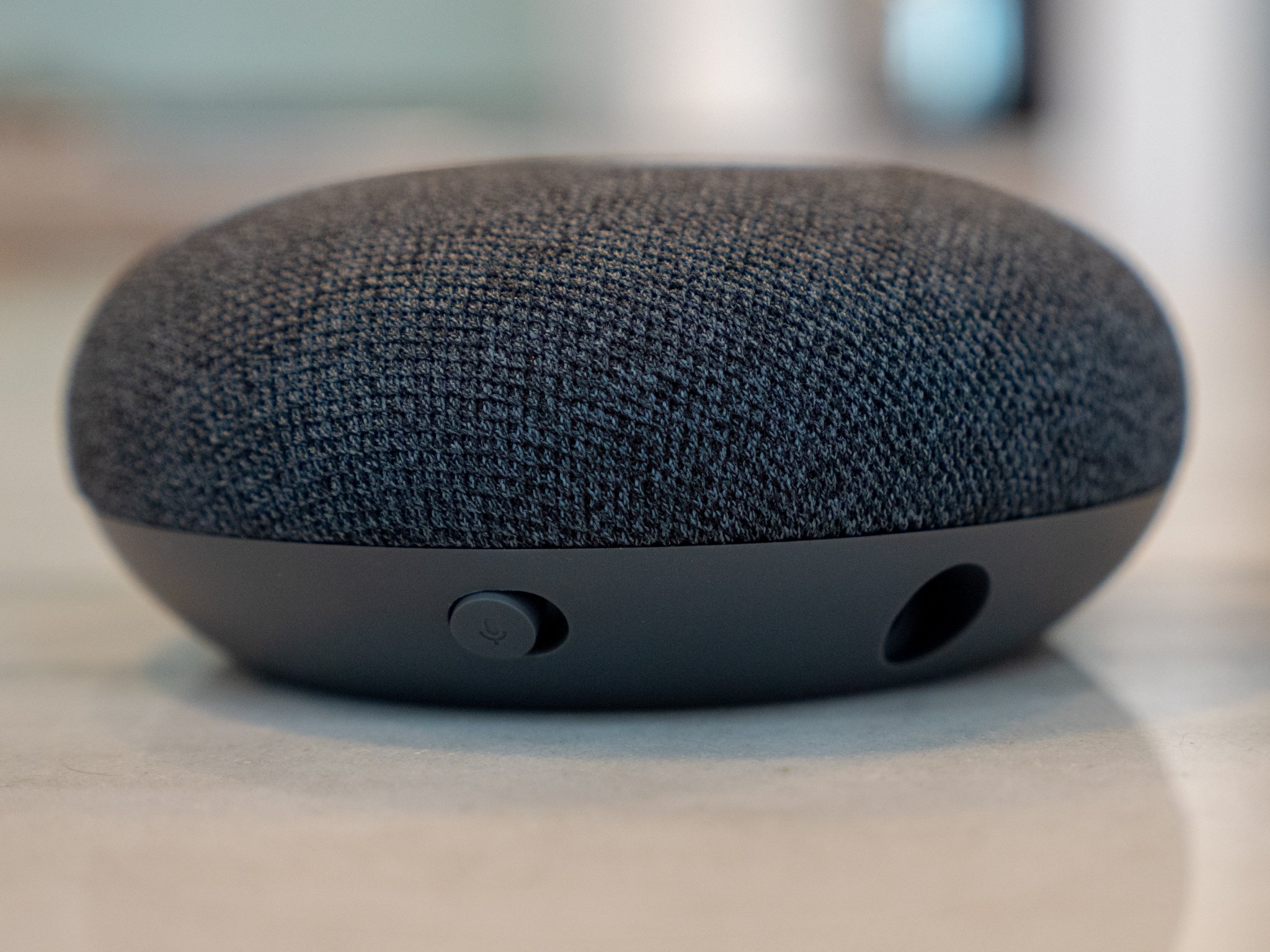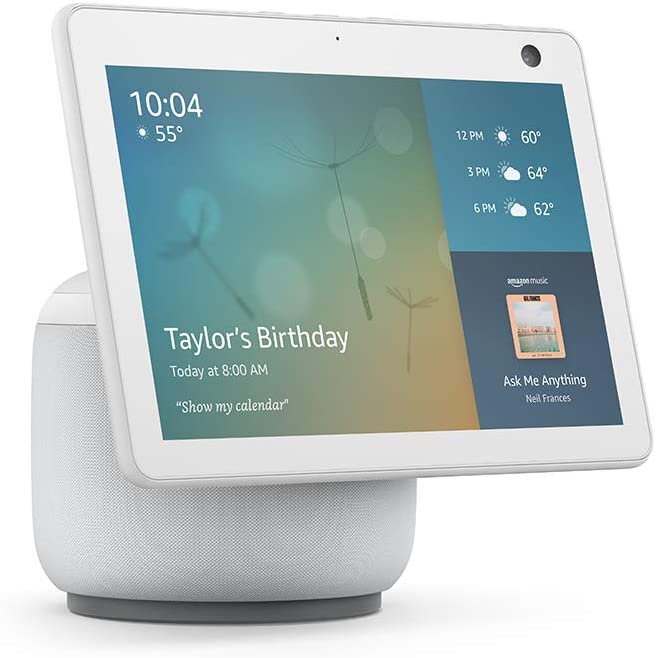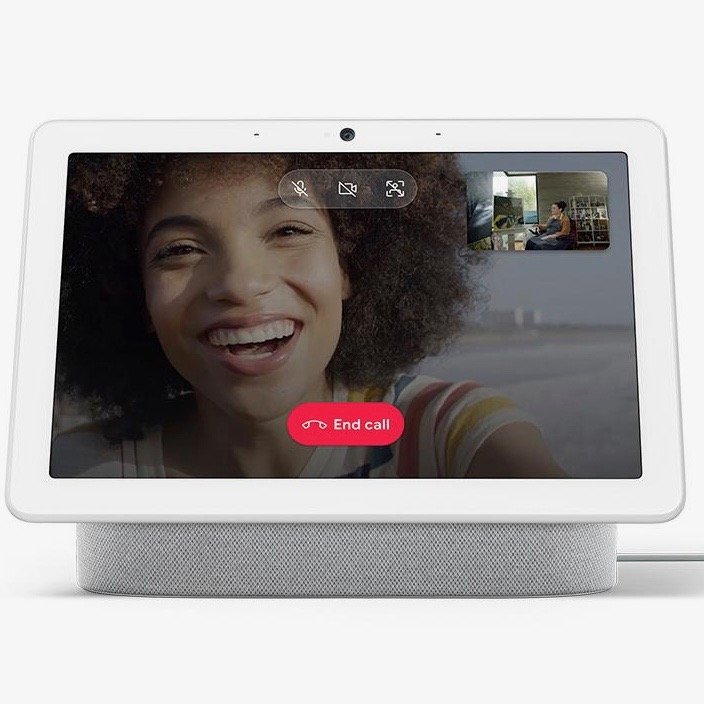With a name like Max, it has to do better.
You may have missed Amazon's announcement of the new Echo Show 10 (3rd Gen) a few weeks ago in the madness that is Tech-tober, itself coming amidst the craziness that is 2020. With all the new products that have been dropped on us by the likes of Google, Samsung, and OnePlus these past few weeks, you'd certainly be forgiven for missing this one product launch among the many others. But I think that the forthcoming Echo Show 10 (3rd Gen) is not only an intriguing new product for Amazon, it's also an opportunity for Google's Nest brand to strike back in a bigger and better way with the next generation of the Nest Hub Max.
You could say Google should max-imize this opportunity.
Listen, I'm a sucker for a good smart speaker. I've got no fewer than 14 of them, both Amazon and Google/Nest, scattered around my modest suburban home. It sounds like I have a problem (I might), but I also write about these things for a living, so it's not that weird. I have an Echo Show 5 that I love sitting next to my big monitor in my home office as my steady, daily companion. I also have a Nest Hub Max in my kitchen that I really love because it has a bigger, better screen, a better camera, and is connected to my Google Calendar. It also does an absolutely fantastic job at showing off my favorite photos (and it always knows just the right one to show). But unless Google and Nest make a few important updates to the next Nest Hub Max, I just might be replacing it on my counter with the new Echo Show 10 (3rd Gen).
How can Google keep my interest in this product? I'm glad you asked! I've jotted down a few improvements that I think would make the next Nest Hub Max an insta-buy for both me and Google faithful everywhere.
1. Put a better camera on it
When smart screen displays first came out a few years ago, they were primarily intended as a way to show you information and video content on-demand, whether you made a request via voice or on the touchscreen. Sure, the devices had cameras (well, most of them did anyway), but those cameras were kind of an afterthought and not very good. You could make a video call with the devices, but the experience wasn't optimal, and the number of available services was limited. Most people who wanted to participate in a video call opted to do so on their smartphones or computers instead.
This has all changed over the past year, with platforms like Zoom, Google Meet and Google Duo becoming ever more popular, and more and more people staying at home where their smart speakers reside as well. Amazon has responded to this trend first with the camera and usability updates that it is introducing with the Echo Show 10 (3rd Gen), including a much-improved 13MP front-facing camera and a display that can rotate and follow you to keep you in the frame.
Now that we all video chat at home all the time, I'd like to look less like a potato in my Nest Hub Max camera feed.
Even if Google doesn't follow Amazon's direction and makes the display on the next Nest Hub Max able to rotate or move, it can take some small steps to improve the video calling experience dramatically. For starters, it needs to bump up the MP count on the camera. Currently, the Nest Hub Max sports a 6.5 MP shooter, which is half as good as the one on the new Echo. It would also be amazing if Google could sprinkle some of the Pixel camera's software magic to work on sub-optimal lighting conditions in the home, and even let you do some fun background effects if your bandwidth can keep up.
2. Introduce more fun photo modes
Speaking of photography, we've said many times that the Nest Hub devices (and other Google Assistant-powered smart screen speakers like those from Lenovo) make the absolute best digital picture frames thanks to Google Photos' AI magic. While I certainly appreciate how well Google Photos seems to know just what photos I want to see, even when I don't realize it, I think it can be even better on a next-gen smart display.
Google Photos can make educated guesses about how to reframe or crop images to fit the screen in a way that Amazon Photos doesn't seem capable of on Echo Show or Fire TV devices, and that's great, but what if it could do even more? What if Google were to introduce some fun photo mode options that could auto-magically turn select photos into painting or illustration stylized versions of themselves, or if it added interesting animations or integrated Google Maps highlights? Those are just a couple of ideas off the top of my head. I trust the experts at Google, both human and AI can come up with even more clever tricks.
3. Make it more flexible
As you may have seen in the photos for the Echo Show 10 (3rd Gen) and may have surmised from my summary of that device above, the newest Echo Show has a display mounted to a cylindrical base (not unlike an Echo speaker). This design allows the screen to be lighter and narrower, and it also allows for bigger, better speakers and a Zigbee smart home hub to live in the base. But ultimately, the big feature of this design is that it allows the display and its cameras to move around the room.
Why would you want this? Well, having a rotating screen allows Amazon to move the display to follow your body so that you can always have a direct line of sight to the device. This is particularly handy when you're trying to follow a video while moving around in the kitchen, or you have antsy children who won't sit still for that video call with grandma. It's also useful for when you put the device in "sentry mode," which allows it to act as a rotating security camera — pretty cool stuff.
I'm not advocating for Google to copy Amazon outright here, but it can certainly learn from these adaptations to make the Nest Hub Max (2?) even better. For instance, what if Google were to put the next Nest Hub Display on a mount that can rotate and pan up, down, and even diagonally? Or what if Google were to allow you to take the display off of the base and attach it to a wall or cabinet like you might do with a computer monitor on a VESA mount? Google already built in a much simpler version of this idea into the Nest Mini, which you can mount on the wall. Why not take it to the next level?
How cool would it be to have a much more portable Nest Hub Max display?
Another way to make the nest Nest Hub Max more flexible would be to allow you to use it untethered from a cord. If the device could operate on battery power for a few hours, it might be nice to tote it to different corners of the house or out on the terrace. It could even potentially serve as a somewhat mobile gaming station for Stadia?
4. Introduce a sleeker design
I don't have a ton to say about this point, but it seems like low-hanging fruit for Google to tighten up the industrial design of a new Nest Hub Max. It could shrink the bezels, make the display panel thinner, and even bring in the base a bit. The edges of the Echo Show 10 (3rd Gen) display are impossible tablet-thin, and Google could certainly match that design. It might also be nice to see a few more color options in the next Hub Max, possibly to match the Sage, Sand, and Sky options in the gorgeous new Nest Audio smart speakers.
5. Make it more sustainable
One of the initiatives that Amazon addressed most strongly at its recent fall hardware event (it was actually the first thing the company talked about there) was its commitment to the environment and its sustainability efforts, both in terms of its build of materials and energy usage. Amazon talked about its Climate Pledge commitment and a new sustainable product program that would include its new Echo smart speakers featuring recycled plastics and aluminum.
Google was actually one of the first, if not the first smart speaker company to announce that at least a portion of its products would be made from sustainable materials. The 2019 Nest Mini and 2020 Nest Audio speakers both sport fabric covers made from recycled water bottles. But just as Amazon appears to have stepped up its sustainability game, it would be great to see Google go even further. Perhaps it could make more of the parts from sustainable materials or have incentivized trade-in programs so that people could return their old speakers to be properly recycled. At the very least, it could include software optimizations to have its devices draw less power more of the time so that they don't contribute more to vampire energy draw.
Google has shown its commitment to sustainability across its organization, so hopefully it's not too much of a stretch to imagine that some of these efforts will materialize in improvements to its future products like a second-generation Nest Hub Max.
Your thoughts?
What changes would you suggest to Google to make the next version of the Nest Hub Max (or whatever Google elects to call it) not only better than it already is but better than the impressive new Echo Show 10 (3rd Gen)? Do you agree or disagree with any of my ideas? Let us know!
Alexa on the move
Amazon Echo Show 10
Doubles its rival's camera MP
Smart displays may never be the same. The Amazon Echo Show 10 keeps you in its sights at all times, with a high-quality camera that'll make you appear clearly during video calls even at a distance. It also doubles as a panning indoor security camera.
The best photo frame
Nest Hub Max
A base for all your Google tech
$230 at Best Buy $229 at Walmart $229 at B&H
This smart display serves many purposes: a central location to link and control all of your smart home devices through Google Assistant, a bright screen to view a slideshow of all your Google Photos, a Nest Cam for home surveillance, and much more.
Source: androidcentral
